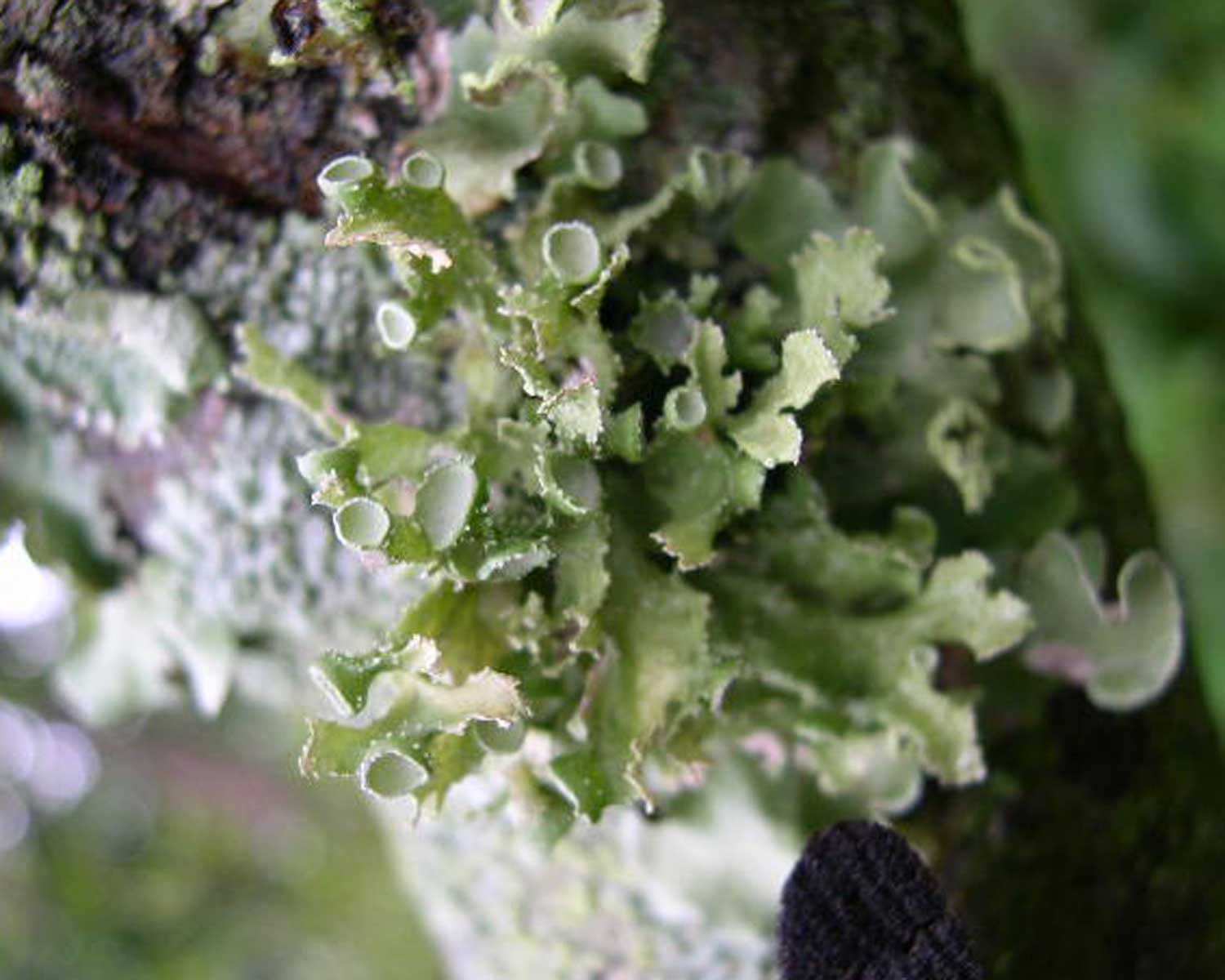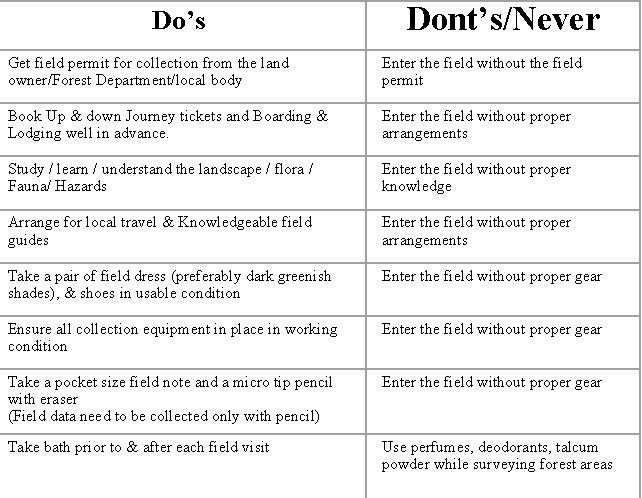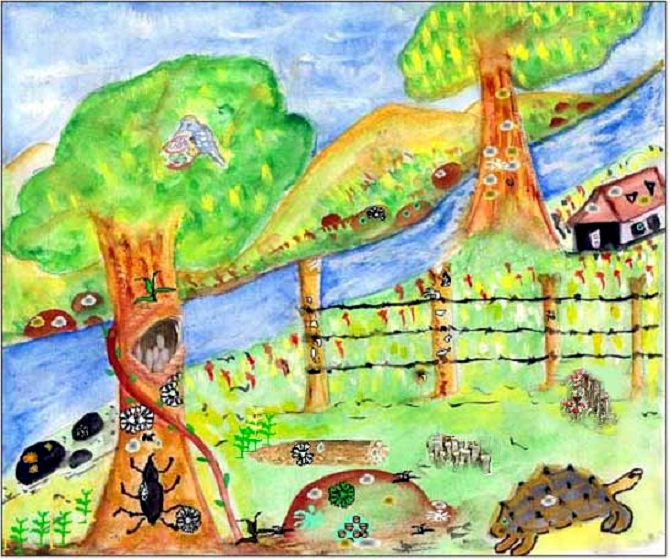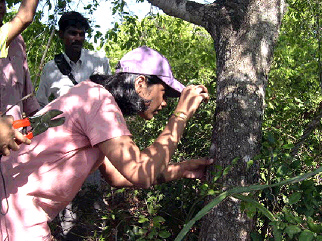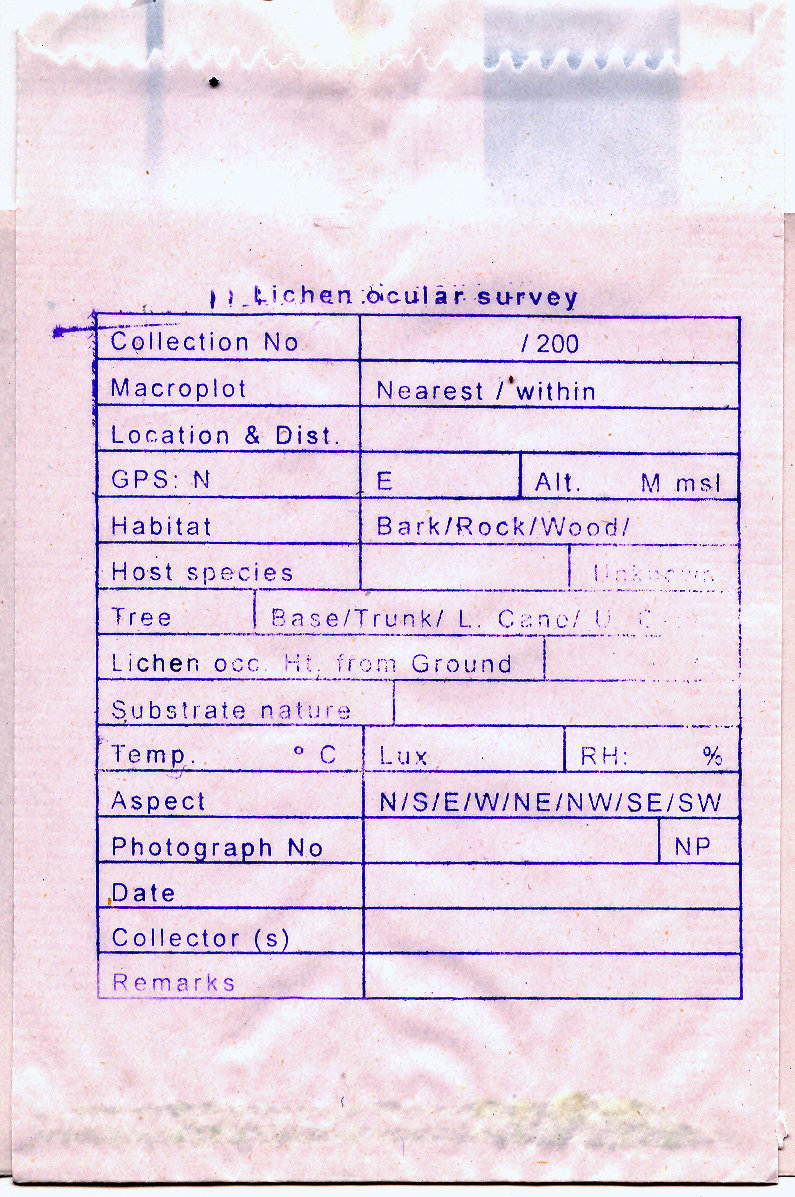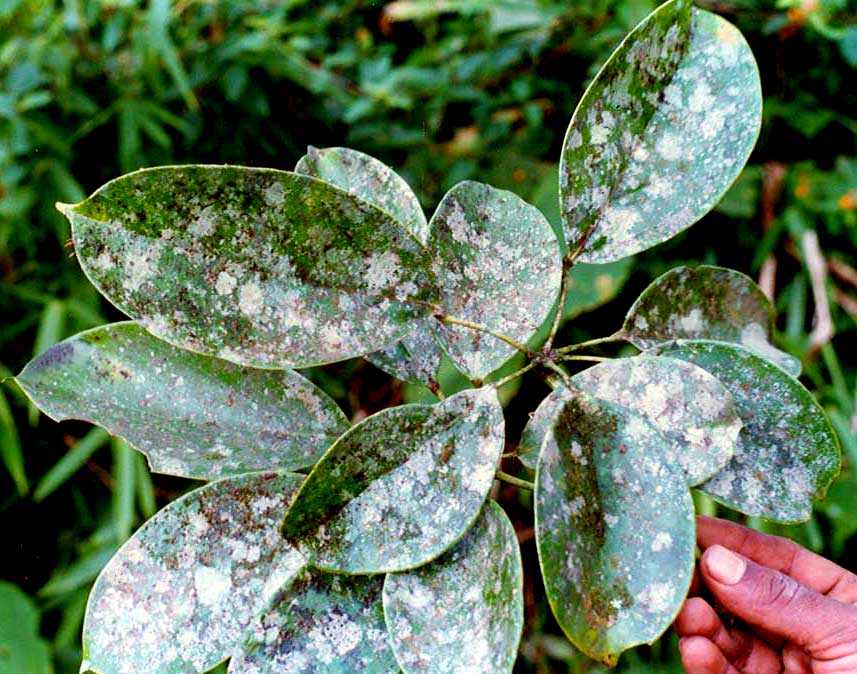MATERIALS REQUIRED FOR FIELD COLLECTION
|
|
|
10x Hand lens with illumination
Camera preferably with digital imaging
Collection bag (Jola or Jolna bag)
|
OBSERVING LICHEN COLONIES USING HAND LENS
The Lichen colonies have to be located and observed one by one.
During field work, surveying smaller land area for a greater length
of time yields more species rather than going through larger areas quickly.
Search extensively for lichens on substrates such as tree bases, bark/rock crevices, twigs and canopy
|
|
|
| |
|
DATA RECORDING PRIOR TO LICHEN COLLECTION
LICHEN COLONY OBSERVATION (LEFT)
|
|
|
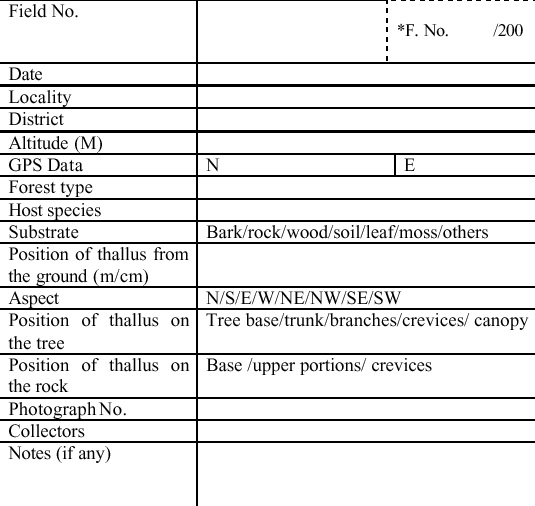 |
| |
A PAGE FROM FIELD NOTE
Each Field Note should contain 100 pages - Preferable size 20x14cm
Field Note should be with waterproof wrapper
Use a micro tip pencil always for recording data
*To be removed and placed along with specimen |
DATA COLLECTION ON LICHENS
|
|
Lichen collection envelope (15 x 9.7cm) with vital data to be recorded (Left) Lichen Microplot with data (Right) |
|
|
|
| = |
|
CRUSTOSE LICHEN COLLECTION
|
|
|
Crustose lichens are also known as micro-lichens.
Most of the crustose lichens are closely appressed to the substrate and are, therefore, very difficult to collect, and need extreme caution during collection.
These lichens need to be collected only when they contain ascomata.
Characteristics like the presence or absence of prothallus, its colour, margin nature (distinct, effuse, etc.), upper surface nature (smooth or matt) and the presence or absence of features like areoles, verruca, isidia or soredia are also important in species identification.
So the collector has to observe several thalli of the same species present in the vicinity and select the one that is complete in all respects.
|
| |
|
|
FOLIOSE LICHEN COLLECTION |
|
|
Foliose lichens have a leaf-like structure and are often attached with the help of rhizines on the substrate.
Many of them may not reproduce sexually, and they often contain asexual propagules.
The lobe margins may or may not contain cilia.
These characteristics are vital for species identification. These lichens, along with the substrate, can be collected with a stout knife or a chisel.
|
| |
|
|
FRUTICOSE LICHEN COLLECTION |
Fruticose specimens are found as pendulous or erect on the surface attached with the help of a holdfast.
The cylindrical fruticose thallus may contain a central axis.
The holdfast and the central axis are important factors in species identification.
These specimens can be collected satisfactorily like the foliose forms.
|
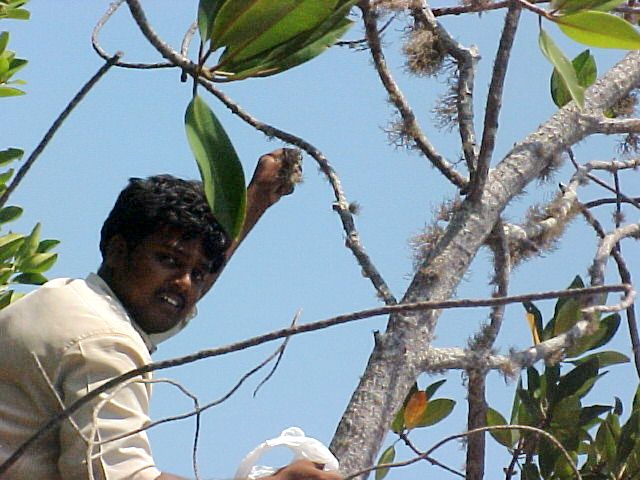 |
| |
|
FOLIICOLOUS LICHEN COLLECTION |
|
|
Foliicolous lichens colonize the upper surface of the leaf.
The entire leaf colonized by the lichen must be collected and preserved.
The leaf sample must be dried properly by changing the blotting paper regularly during drying process.
Lichen species belonging to Aulaxina, Tricharia, etc. possess an erect conidiomata, a key characteristic in species identification. This structure is extremely delicate. So, during collection and subsequent drying, pressure should not be exerted to remove wrinkles.
Simple spreading of the leaves under the blotting paper is sufficient.
Later, the dried leaves can be wrapped in tissue paper and placed inside the herbarium folder. |
Lichens inhabiting rock surfaces are known as Saxicolous lichens.
Most of the rock lichens are closely appressed to the substrate and are, therefore, very difficult to collect, and need extreme caution during collection. Collect lichen thallus along with a small piece of substratum (rock).
Some rocks are difficult to collect and therefore it is necessary to scrap material off with sharp knife.
Rock samples should be wrapped individually to avoid being damaged by rubbing against other samples in the collection bag.
Some species are restricted to particular rock type and so it is important to examine as many rock types as may be present in an area.
Before making a field trip it is consequently valuable first to study a geological map of the area to be visited
|
SAXICOLOUS LICHEN COLLECTION
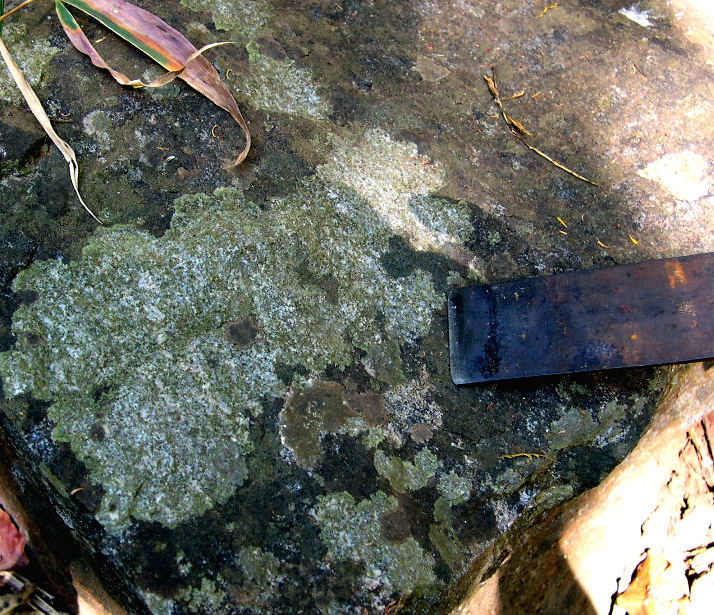
|
| |
Specimen Preservation
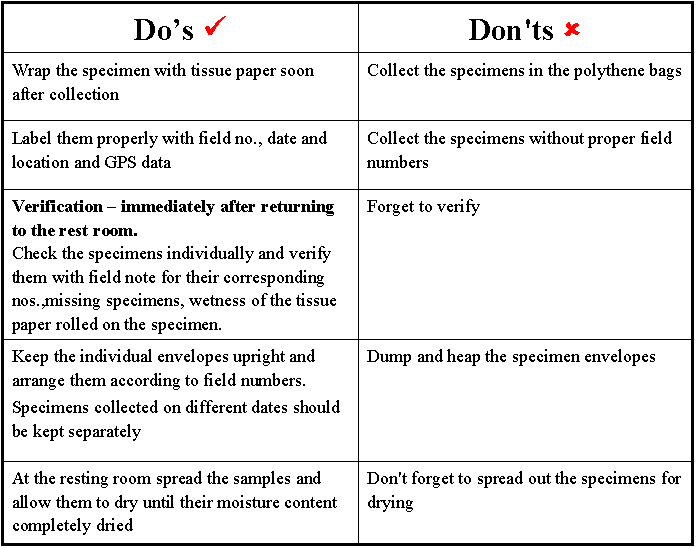 |
|
|
| |
|
| |
|
